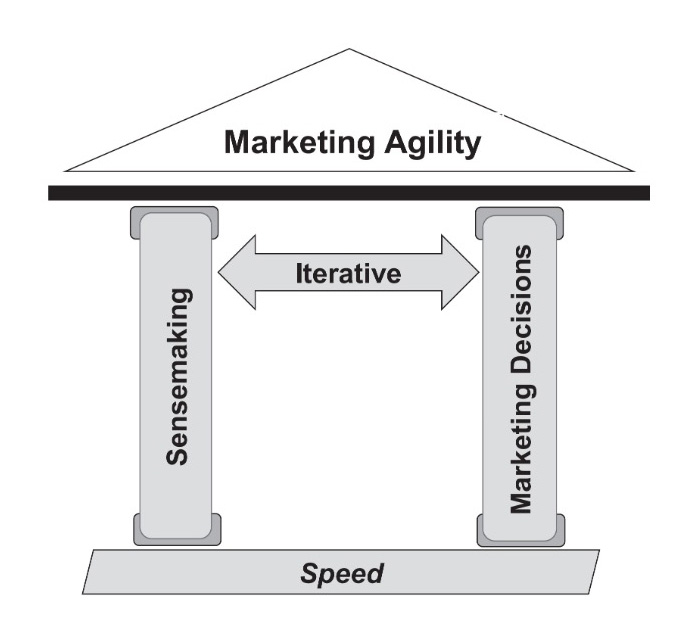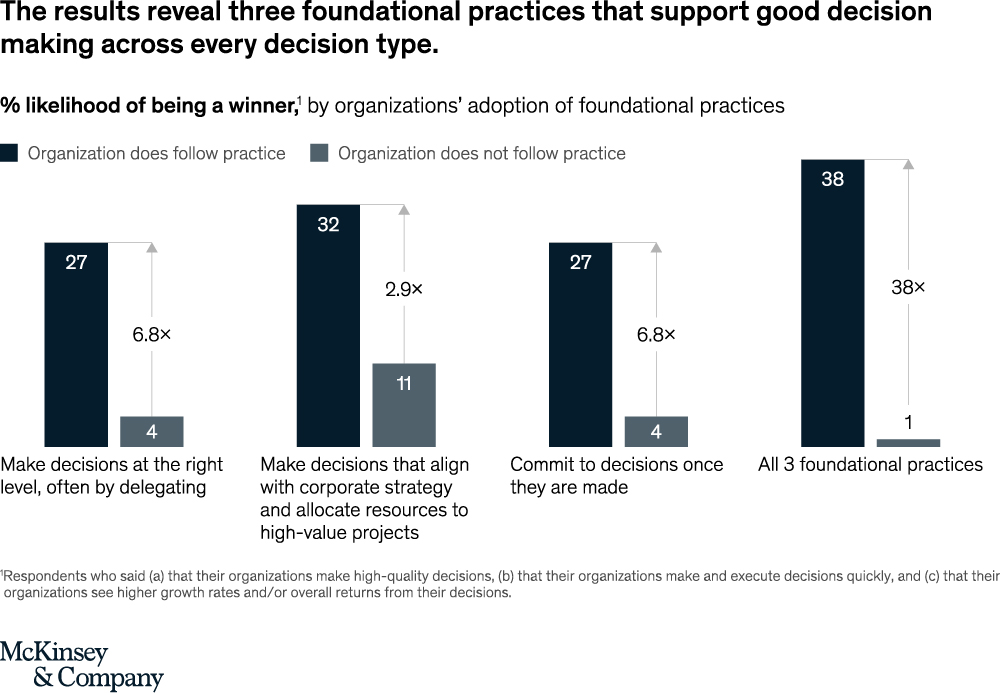
Is autonomy, or empowerment as it is sometimes described, key to achieving marketing agility? Some studies have concluded that it is. Kalaignanam, Tuli, and Gall concluded that “flexible structures that promote cross-functional collaboration and cross-pollination of knowledge are crucial for enabling marketing agility at an organizational level.” This can be even more important when the challenge is highly unstructured, with many unknowns. Perry, Pearce, and Sims found that sales teams consisting of both marketing and sales professionals who are empowered to make decisions and share leadership are more effective than teams that are not similarly empowered.
Why is autonomy critical to marketing agility? How do marketing leaders who hesitate to give up decision-making authority become comfortable with allowing teams to make certain decisions?
Why Marketing Agility Requires Embracing Autonomy
Let’s begin by defining the components of marketing agility. In the same paper referenced above, Kalaignanam, Tull, and Gall defined marketing agility as follows:
Marketing agility refers to the extent to which an entity rapidly iterates between making sense of the market and executing marketing decisions to adapt to the market.
They go on to describe marketing agility as having four factors: Sensemaking, Marketing Decisions, Speed, and Iteration, as shown in the diagram below:

To what extent do these four components of marketing agility require autonomy? Let’s look at each in turn.
Sensemaking
Sensemaking occurs when marketers are unsure: they confront customer behavior that is surprising or confusing, and they need to make sense of it. Will seeking out the opinions of higher management, abdicating their own autonomy, help marketers make sense of difficult or surprising situations? In most cases, no.
Marketers are better off running experiments, testing hypotheses, and gathering data rather than seeking internal approvals to make sense of confusing customer behavior. Regardless of who eventually makes the decision, having greater data to make sense of customer behavior will result in better decision-making.
Marketing Decisions
A few years ago, McKinsey conducted a study examining the differences in decision-making between top companies (the top 20% of respondents based on financial performance) and less well-performing companies. They found “that the quality and speed of decision making are both strongly associated with overall company performance.” This is unsurprising; companies that make high-quality big bets quicker than their competitors generate better financial results.
What was more interesting is what led to high-quality, rapid decisions. They found that three foundational practices supported good decision-making, as shown below.

Making decisions at the right level, often by delegating, leads to almost 7 times more likelihood of an organization being in the top 20% of respondents as measured by financial performance. By delegating marketing decisions at the right level, usually to cross-functional teams, marketing organizations are more likely to deliver better financial performance.
Speed
Marketing agility requires speed, specifically speed for sensemaking and marketing decision-making. This can be very difficult to accomplish when teams have no autonomy. If every decision requires multiple levels of approval, decisions slow down. Sensemaking slows down. Teams don’t take ownership of the sensemaking and marketing decision-making loop.
Iterations
My favorite story about the importance of iterations comes from an Agile Marketing Meetup meeting in San Francisco in 2014. Satya Patel, former VP of Product at Twitter, addressed the question “How many experiments would you run in any given month at Twitter?” His answer: “I would say we started with, honestly, one or two [a month] and by the end we were running, probably, 10 a week.” Satya went on to describe how their implementation of more and better testing at Twitter led to improvement in active user growth. By increasing the tempo of their iterations, they were able to increase their active user growth.
These iterations require autonomy. Teams need to be able to fail. They often learn more from their failures than they do from their successes.
How Marketing Leaders Can Give Up Authority
Marketing leaders are understandably reluctant to give up authority. They may have been promoted because they were good at making sense of information and making decisions quickly. Their bosses may hold them accountable if teams fail to deliver results.
But not giving up authority has its drawbacks. Teams cannot iterate at speed if they have to check with marketing leaders for every experiment and every decision. Teams won’t take ownership of sensemaking and decision-making unless they’re granted autonomy.
The key is to follow the McKinsey findings – make decisions at the right level, with a propensity for delegating decisions.
What is the right level? This is one of those “it depends” questions. But in many cases, the right level is the one closest to the customer.
Risk also plays a role. If the decision is easily reversible, for example, then push down the decision-making. If it is irreversible, then be more cautious about pushing it down.
Conclusion
By its very definition, marketing agility requires autonomy. Without a certain degree of autonomy, you can’t achieve the speed of sensemaking and decision-making, never mind rapid iterations. Marketing leaders who want marketing agility need to figure out the degree of autonomy that they want to give teams. In many cases, the greater the autonomy, the greater the marketing agility.

